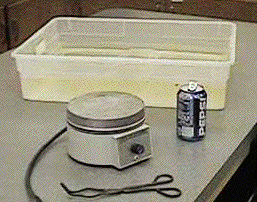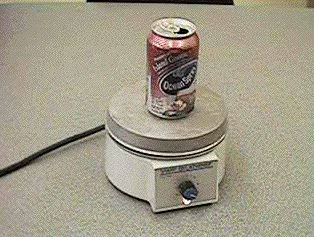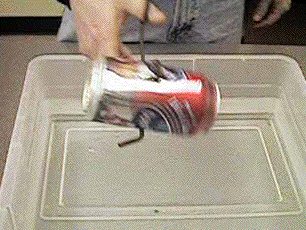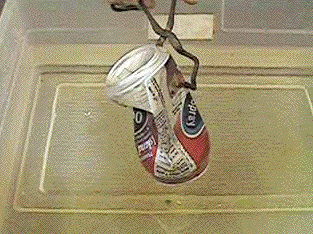 |
|
|
|
|
|
 |
|
|
|
 |
 |
|
|
|
 |
Simple Pressure Questions1. What was in the can initially (after soda is gone) along with the water?2. What changes take place in the can when the water is boiled? 3. What happens to the air in the can as water vapor is formed? 4.(a) Describe what happened in your own words. (b) Draw the changes
5.(a) What force was acting on the outside of the can? (b) How
might one
6. Does the calculation change if you are at different elevations
(compare
7. (a) What would happen if we took an empty pop can and
took it down
|
RationaleInitially the can is filled with water and air. By boiling the water it changesstates, from a liquid to a vapor. The water vapor forces the air out of the can. When the can is inverted and submerged the vapor is rapidly cooled, causing the water vapor to change states again, condensing back to liquid water. The water vapor occupied all of the space in the can and was in equilibrium with the atmospheric pressure while it was being heated. Once it is cooled, however, the liquid water occupies only a small volume of the can while air should occupy the rest of the volume. But by submerging the opening of the can, air is prevented from rapidly flowing back into the can causing a decrease in internal pressure. We see the atmospheric pressure pushing on the can causing it to collapse. Using Fa = paA (where F = force, A = area, and pa = 10N/m2 = 1atm at sea level) one can calculate the force on the can. Pressure is approximately halved for every 5km of altitude up to 20km, therefore the calculation for force does change for Flagstaff. |
References:This experiment can be found many places in written form including:1) D. Rae Carpenter, Jr. and Richard B Minnix (1993).
|